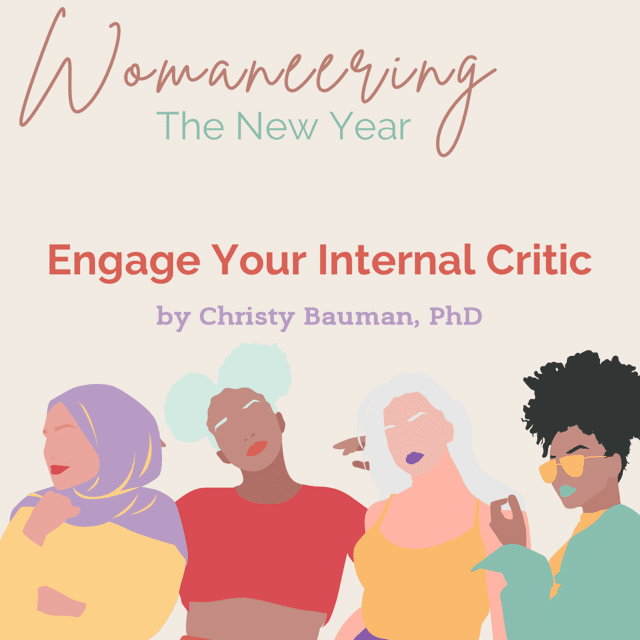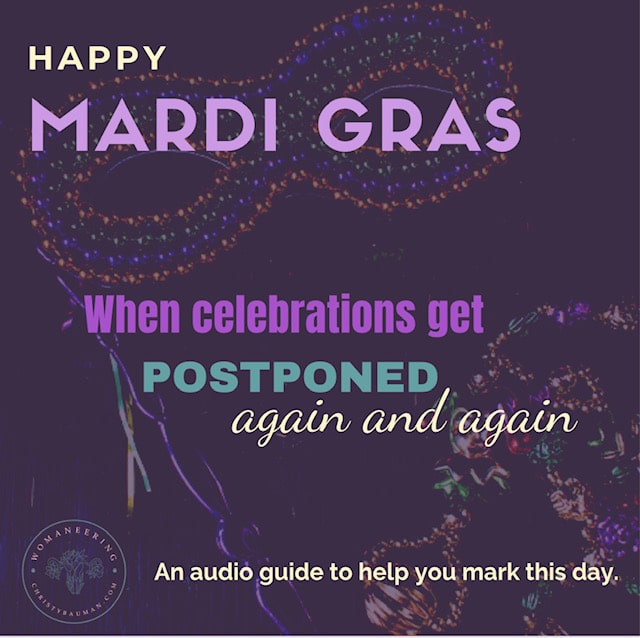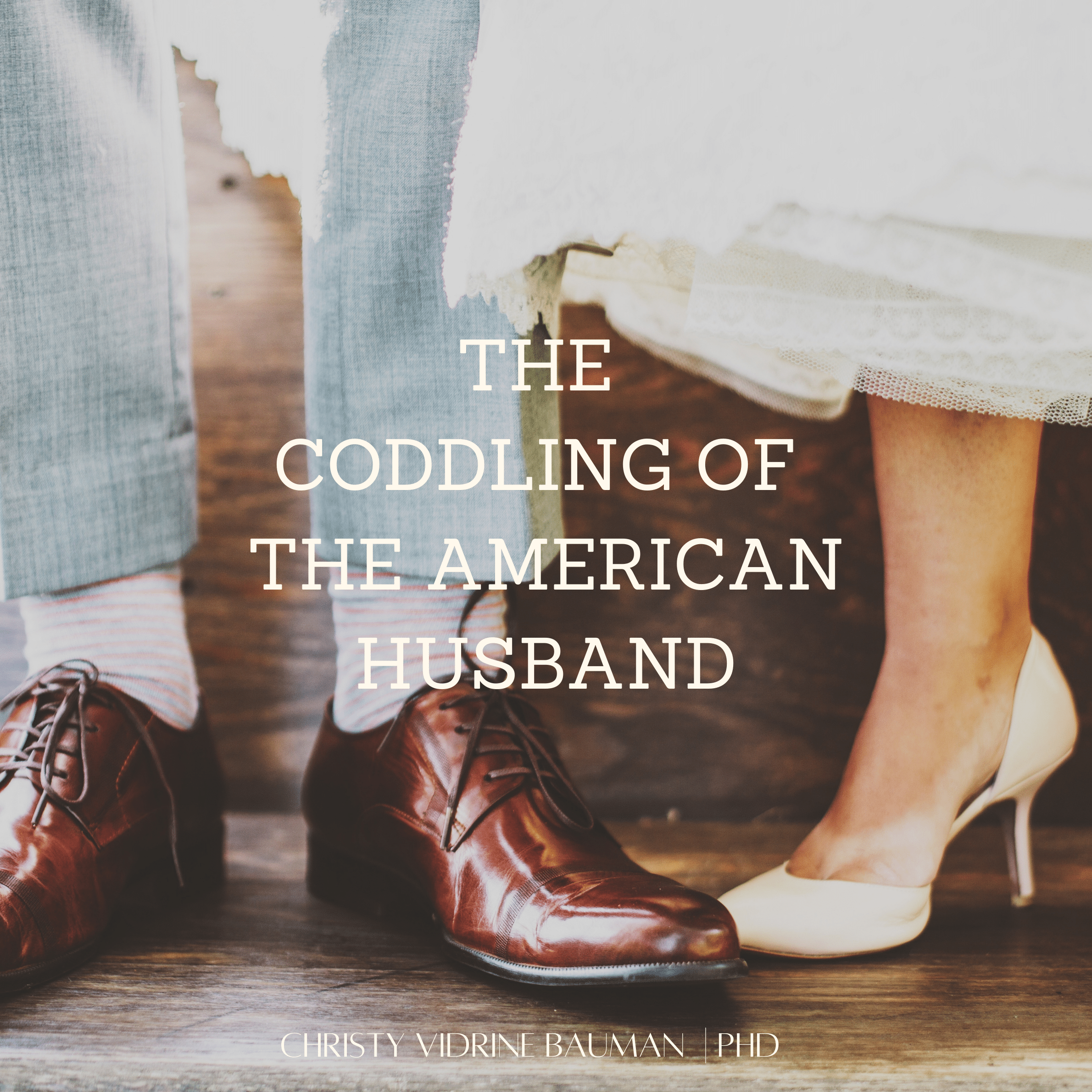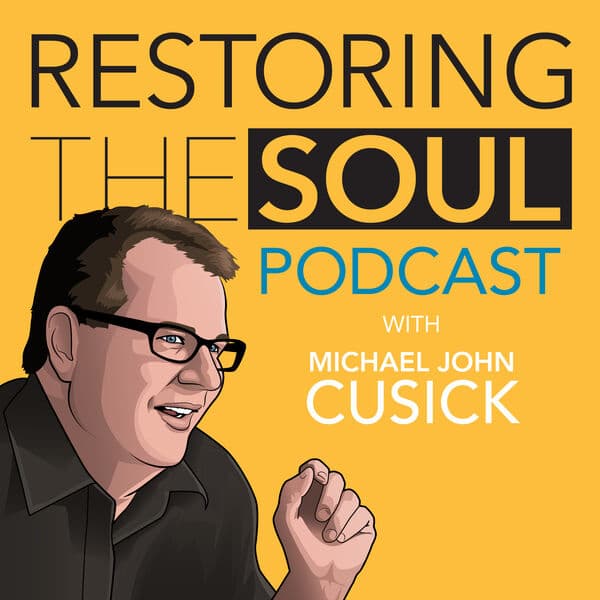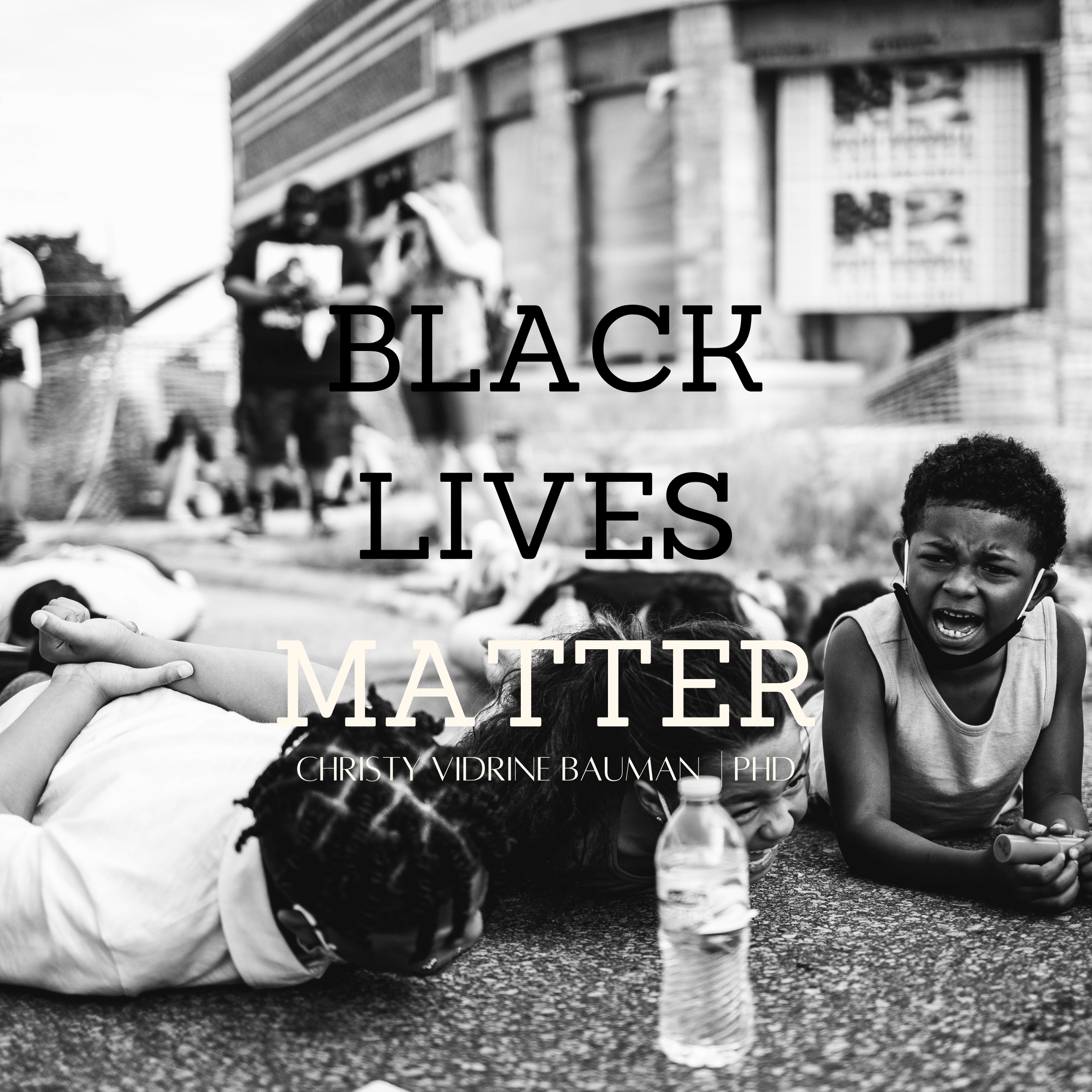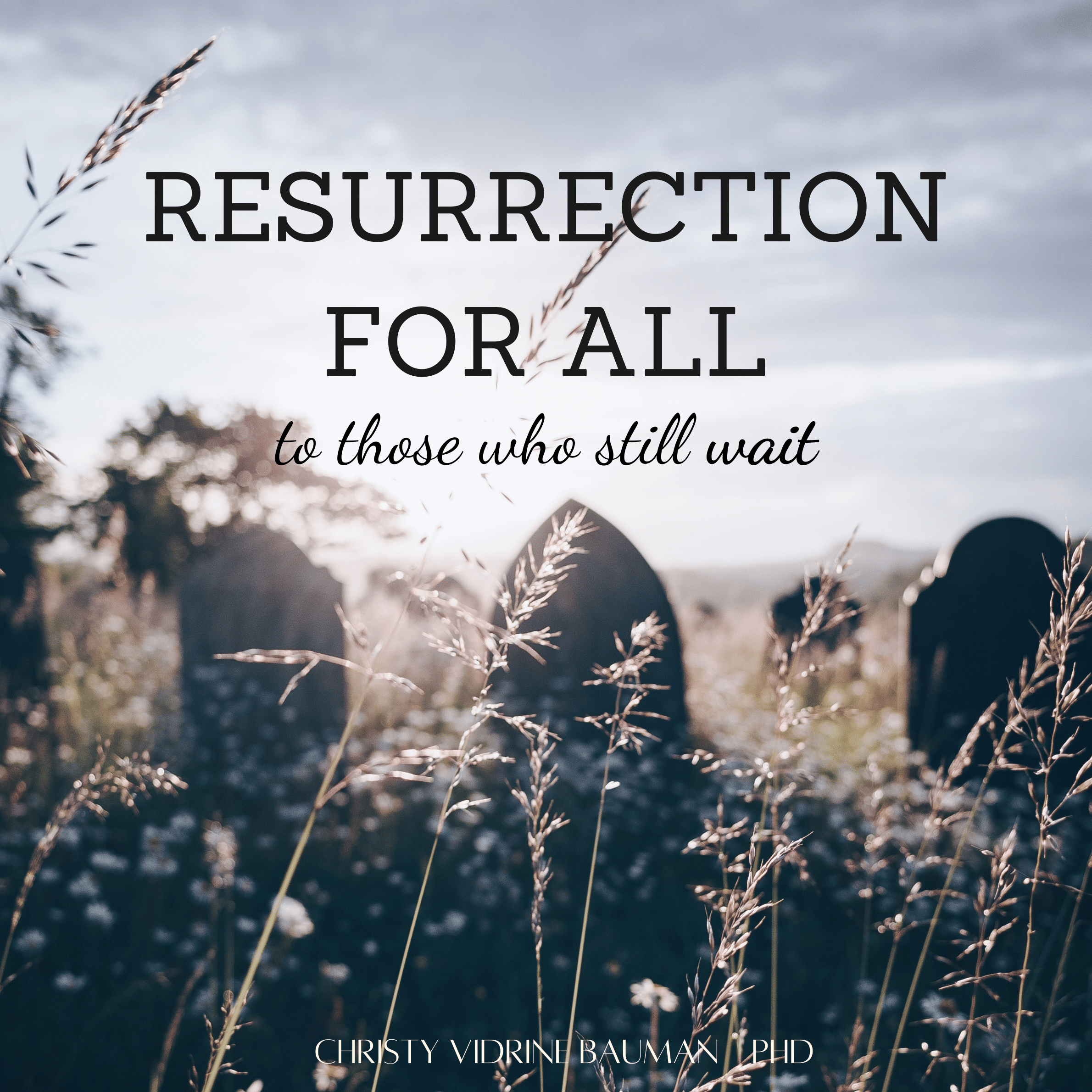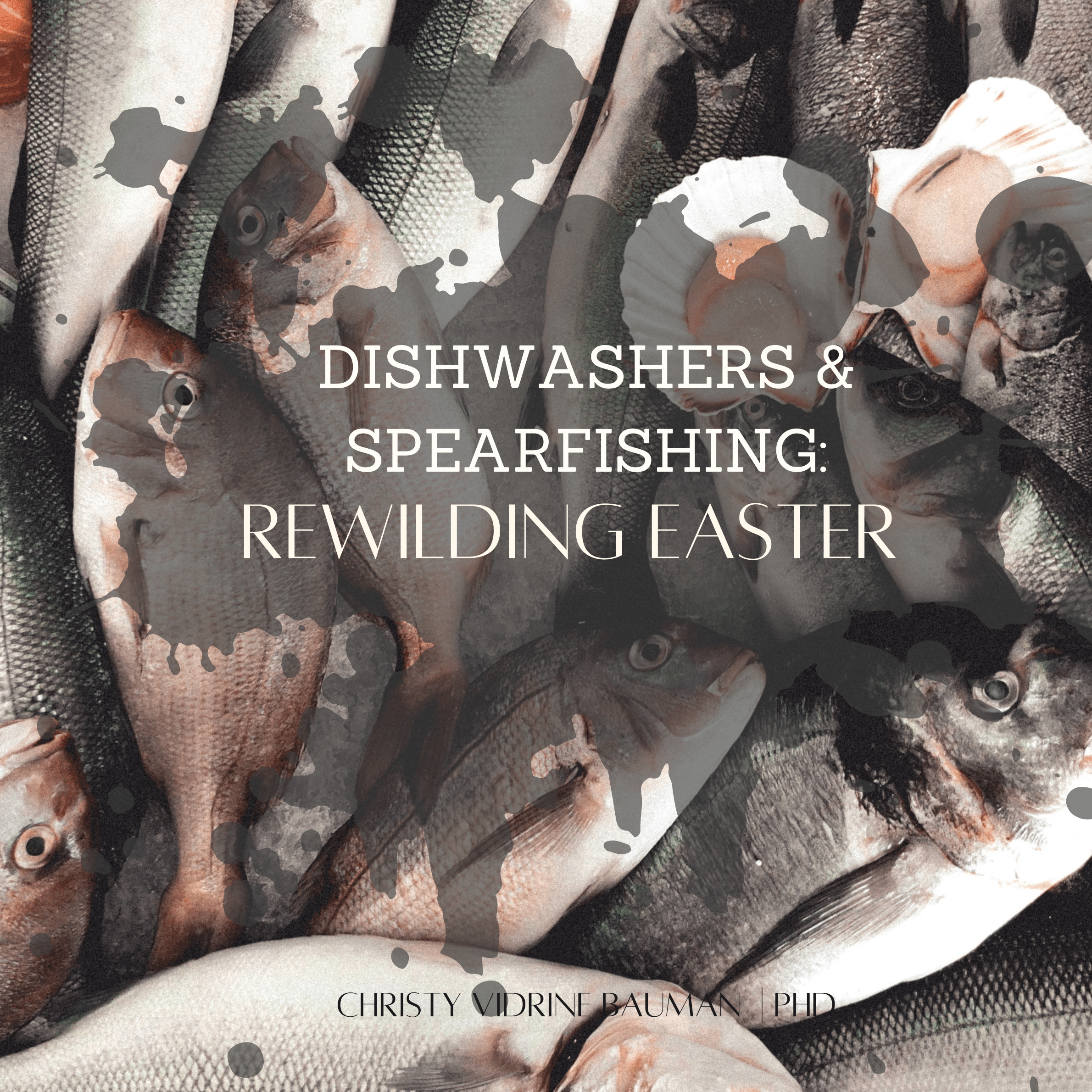Womaneering the New Year: Engage Your Internal Critic
Phew! We made it to the end of the year.
As a mental health practitioner, I know that every human psyche subconsciously exhaled a little when they woke up this morning. New Year’s Day is here...welcome to this n-e-w year! My friend Leah says her favorite day is the first day of the month because she gets to change her calendar to a fresh page of empty squares to fill however she wants. I have felt my excitement for this particular day for a while now. In fact, sometime in October, during the height of my depression from the long-suffering year, my mind began to fantasize about this first day of the new year. It’s here now. Thank you, Jesus, in Heaven!
Last new year, I could not have conceived what this past year would hold: COVID. Pandemic. Homeschooling. Quarantining. Lockdown. Masks. Hand sanitizer. Fear and Anxiety. No childcare. Online grocery shopping. The election. Protests and racial justice rallies. Family members dying. Siloed death, and thus, siloed grief.
The amount of time it will take to disentangle ourselves from these lived experiences is unknown. Each year it takes me about a month to stop signing my checks with the previous year. This year I started practicing in November, writing the year 2021. I imagine it will be a similar undoing for our psychological health as well. We all have different ways of extricating ourselves from old patterns, yet today I am struck wondering how long it will take for the United States to recover from last year?
My resolution this year is to unwind the impact of last year. I must begin by listening to my stories from the past year. What was exposed in me during seasons of stress and hardship? Due to quarantine, I spent a lot of time in my house with my family. This magnified so many issues: my self-esteem and body image, marital discord, and fear of isolation. These exposures invite me to be curious about my own story.
Let’s choose one, self-esteem and body image.
As much as I have not wanted to make the common weight-loss resolutions, I must admit that I have for the last five years. It is hard to skirt my internal critic when I see my physical reflection. She waits for me in the hall or bathroom mirror, and she seemingly has endless time to find me in street shop glass windows. I have come to find that my internal critic sounds a lot like my mother. More so, my inner voice criticizes particularly what my mother critiques in herself. My sin is that I have come to align with this internal critic.
It is only through achieving a Ph.D. in counseling skills that I have come to acknowledge and engage my internal critic. Initially, I blamed my mom until I realized it was no longer her voice commenting on my figure; it was my own. It is now my work to become a better “mother” to myself.
Pull quote: Mothering your internal critic is the act of speaking to your most vulnerable parts with the wisdom of sage femme.
Sage femme is the wise woman, the one who is more mature and enlightened because she is your future self. My internal critic can invite the insecure parts of me to be mothered by the sage-femme. When I come to my reflection, or the reflection of this last year and how I survived it, I want to invite my internal, wise mother-voice to speak kindness and love over the critique.
The art of re-mothering is made up of tools that can tend to bleeding wounds, rebuild broken dreams, and speak words of hope. Hannah Gadsby writes, “There is nothing stronger than a broken woman who has rebuilt herself.”
Within my spiritual circles, a new year is also a time of reflection and planning, where one can choose a word to intentionally carry through the next 365 days. My word for 2021 is “womaneering.” I made up the word over a decade ago. Womaneering is the art of pioneering womanhood. I no longer want to use societal lenses to measure myself against. Amid the heartache, patriarchy, chaos, and ache of last year, I want to free myself to live into my most authentic self.
Last year reminded me that life is not certain or promised. So, good woman, as you step into this new year, ask the wise woman to speak to the vulnerable parts still reeling from a frightening and tumultuous year. Breathe deep and bless yourself, for you made it. Release yourself to freely womaneer into the most honest you.
The Woman in White: How Shame & Purity Culture Impacted My Sexuality
This article has been reposted from Red Tent Living, original publication can be found here.
This is the dress.
I breathed the words barely above a whisper, just loud enough for my mom and best friend to hear. As I stood in front of the bridal mirror mesmerized by my reflection, I heard my mom break the awe of the moment with a quick clarifying question: “But we can get this dress in white, right?”
Although the ivory tone of the chiffon looked more expensive to me, I immediately knew why she was asking. It was important for my mother to have her daughter walk down the aisle in white to represent my chastity. Society has long symbolized the purity of the bride with a white dress. In Jewish custom, it is the father of the betrothed who gives an oath of his daughter’s virginity, but in Western Christianity, it would be my charismatic Catholic mother who would swear to my virginity with the whitest fabric she could afford.
White. What does a woman in white represent? White has historically been associated with freedom, innocence, omnipotence, and most commonly, purity. Long before the purity movement in Christianity, there was a demand for chastity; an expectation of sexual innocence placed on women that were not expected of men.
Women have come to bear the weight of wearing white.
Sexism and patriarchy have wielded shame and stigma, demanding a woman’s worth be tied to her virginity. These two evil agents of destruction have seeped into the church and ravaged its women. Anyone who allowed herself to be shamed into remaining pure until marriage was promised a happy, healthy sex life, yet psychological research shows us that a significant percentage of marriages from the purity movement is now in couple’s therapy, seeking help navigating their sexual health.
Sexual shame is the culprit.
Male Christians typically grow up learning about sex through hidden pornography use while female Christians squelch their sexuality, ascribing holiness to a lack of sexual desire. When I asked 400 of my Christian female clients how often they orgasm in heterosexual relationships, they said 10-15% of the time; and when I asked how often their male partners orgasm, the answer was 95-100% of the time.
Dr. Noel Clark defines sexual shame as internalized feelings of disgust and humiliation towards one’s own body and identity as a sexual being. For church-going women, these issues have often been narrated through patriarchal theologies, resulting in a skewed understanding of body image and sexuality. How have we allowed our bodies and our spiritual health to be defined by men? How has shame stolen our healthy, God-intended sexual arousal? Women who identify as lesbian or queer may receive a potential double dose of shame from the pulpit—first, due to their sexual orientation, and secondly, due to body image and general issues related to sexual activity.
On my wedding day, I was the only person wearing white. I felt the need for the color of my dress to symbolize the bride of Christ. My wedding day was everything I could have dreamt of, short of the cold temperature, but when we cut the cake and someone went to prepare the getaway car, I began to panic. I was crying with my bridesmaids as I changed into my exit dress. My tears were hot as I confessed my fear that losing my virginity might make me less holy in the eyes of God and others.
There is a sexual state that sexual shame from the pulpit also encourages, but it is less often spoken: asexuality, a lack of sexual attraction. It is highly common for me to hear complaints from my male clients of a significant decline in sex after the wedding night. I have heard partner after partner says, “My wife was all over me when we were dating, and now she never wants to have sex.”
That was my story too. The safety of dating meant I could do everything but have sex, and therefore, I felt safe to explore my arousal because I knew we would never consummate it until the wedding night. On the wedding night, my sexuality shifted. It has taken eleven years of marriage and therapy for me to approach sex differently, with uninterrupted eye contact with my partner and curiosity towards my own body and pleasure rather than focusing solely on my partner’s arousal.
Every day in my counseling practice, I witness clients attempting to untangle their sexual shame. Often shame has a powerful hold on the psyche, while a trauma can lessen in the brain, shame entwines itself around one’s self-esteem. Our God-given arousal cycle does not flourish in places of shame. Whenever we enter a covenant I believe God dresses us all in white, shameless, and holy.
Dr. Christy Bauman, Ph.D., MDFT, & LMHC is committed to helping women come into their true voice. She offers story-work consulting. She is the author and producer of her works: Theology of the Womb, Womaneering Perpetual Calendar, A Brave Lament, and the award-winning Documentary: A Brave Lament. She is a psychotherapist, supervisor, part-time professor who focuses on the female body, sexuality, and theology. Christy’s work can be found at christybauman.com
Ash Wednesday Liturgy Guide: An Invitation to Inhale
Ash Wednesday Liturgy: Guide to Inhale
I am anxious as soon as I wake up. I will be late to work if I stop to get ashes this morning. I should have planned better but the Mardi Gras celebration the day before went late and dropping off kids to childcare before work leaves little time to get to an Ash Wednesday mass. I can see the bar-b-que pit on the back porch and I am tempted. Surely, I can NOT use ashes from there to mark my forehead. Well, there is only one person who knows if that is sacrilegious or not...I call Mema. My devoutly, Catholic grandmother picks up the phone and chuckles at my question. I love the playfulness she has with Jesus.
“I think Jesus cares about the fact that you want to mark this day with Him. Jesus cares that you recognize His suffering and you want to be with Him in it.”
There is so much truth in her answer that I immediately open the sliding glass door and pull off the grate on the grill. The feel of the ash is distinct, the granules bring me face to face with loss. The granules of ash are the remnants of something now burned up. Tears well up thinking of Christ facing His own journey toward death. I let the tears drip into my ash-filled palm. I smear my grief with the loss and scrape the ash mixture in the sign of the cross on my forehead. I whisper the words.
“I want to know You in Your suffering, my Lord.”
And as soon as the moment became holy, it turned to reality. The 6-minute DIY liturgy was interrupted by time. I packed my kids in the car and began the normal, Wednesday routine. Throughout the day, after forgetting there were ashes on my head, I would rub some accidentally on my fingers, or see my reflection in the rearview mirror and I would smile for a moment recalling the early morning bbq service I had with Jesus.
May we be wild in our desire to connect with our Savior.
Ash Wednesday - The First Day of Lent
Ash Wednesday is the first day marking the journey Christ took towards death. Lent is an invitation for Christians to journey alongside with repentance and mourning for sins. Although it is not directly named in the Bible, there are verses in Daniel that connect fasting to ashes and the act of Lenten practices. Lent is an Old English word meaning lengthen. This lengthening is observed in 40 days which mimics Christ’s withdrawal for 40 days in the desert where He was tempted. For the Christian attempting to replicate this act of sacrifice is normally done through fasting from both foods or festivities. Religious, traditional denominations take Lent more strictly requiring believers to observe the holiday, such as Ramadan or another religious fasting.
As a young Cajun, Catholic little girl from Southern Louisiana, I was very used to not eating meat on Fridays during Lent and replacing our meals with fish or crawfish, which was a favorite of mine. We fished a lot growing up, it was my favorite time for hunting, because we used poles and nets instead of guns. I loved the thrill of catching a fish or bringing up a crawfish net trap full of crawfish. Guns and bullets were somehow put away and repentance was expected. I remember how much I enjoyed the men in my life during Lent, I would fish with my daddy early on Sunday mornings. The conversations I had in fishing boats have always been so much better to me than the cold, silent hours in the duck blinds.
Lent required me to turn toward a sacrifice for reflection, it asked me to wait. In the waiting, I could wonder what it was like for Christ in the desert, in the forty days of preparing. What did He think about when He was hungry? I have not known hunger but in the discipline of fasting, I reflect on those in this world who know hunger and even starvation. Sacrifice leads us to the reflection of penance. Christ wants us to journey with Him so that we might know deeply in our hearts how to live into repentance and sacrifice. For me, being hungry demands me to evaluate how I live in a world where hunger is a reality. And Christ then asks me, are you willing to die for your sin? And I am led to ask myself, am I willing to live a life feeding the poor and hungry? What is Lent unless it moves us to action? What is the point of repenting if we aren’t moved to change, so much so, we go to our death living differently? Christ reflected on His love for God’s people, and He taught His body to long for a redeemed world. Forty days of fasting led Christ to desire redemption for this world so much that He could make it through the crucifixion to get to the resurrection.
What is Lent inviting you into?
What is it in your world that needs your crucifixion to know resurrection?
༒
Ash Wednesday Marking Guide
⟴ Create a room in your home or church that will be available for individuals to stop by during the morning hours (7-9am) and the evening (5-7pm) of Ash Wednesday
⟴ Invite those who attended the Mardi Gras celebration the evening before to join. All are welcome.
⟴ Offer carafes of tea and coffee.
⟴ Create dimly lit areas with 3 stations, each station can include: candles, scraps of paper, writing utensils, cut out prayers, and poems at different stations.
⟴ Stations of Reflection, Repentance, and Resolve
That station of reflection should be observed in silence. It is a table with multiple strips of papers with different reflections of coming into the beginning of Lent and aligning with the preparation of the heart into suffering.
The station of repentance is about reflection that brings us to remorse and writing down what we confess and repent of. These papers are to be carried to the following station of resolve.
The station of resolve is a place to burn the papers we have written our sins on. (The ash from these papers may be cooled, collected, and used for our ashes on our heads. It is time to set our hearts toward Christ and what he is being asked to walk into. We align ourselves with Him and commit to coming alongside His journey to the cross.
⟴ At the door when each individual is leaving, one person is assigned to offer ashes, often it is tradition to burn the dried palm leaves used at the Palm Sunday service. These make for the ashes to put the sign of the cross on each head.
⟴ Recite your own chosen words or something in this vein of thought:
Ashes to Ashes, Dust to Dust
Lord, we want to know You in Your suffering,
Prepare our hearts by the confession of (name)’s sins.
As, (name), wants to walk closer with You.
Amen.
Mardi Gras Marking Liturgy
Postponing Celebration: When Mardi Gras is Cancelled
In the culture I grew up in if it was tradition, you had to do it, you had to throw the party, facilitate the event...but this year, I have to break that tradition. I know that today is Mardi Gras, but in my heart, Ash Wednesday has come a day early and my heart is achy. So, I have postponed Mardi Gras this year much like all that has been postponed with the pandemic. So often our culture has it backward, we try to distract ourselves from our pain, or at least I do. Yet grief must be greeted and felt like our other emotions. So whatever celebration you are postponing or altering, may you have the strength to post-pone well. To the level in which we engage grief is the level, we can engage in celebration.
To the level we grieve is the to level we will celebrate.
As much as my history and tradition tell me to celebrate today, possibly what it was actually teaching me is that on the days we are grieving, may we grieve authentically and on the days we are celebrating, may we live honorably in hope and laughter. However you find yourself, rest in God’s love that longs for your heart to be known, whether in a season of grief or a season of celebration.
Happy Mardi Gras everyone, I share this post as a tribute to Mardi Gras of old and with curiosity to learn how to build resilience and hold the tension of both life and death. While my celebrations will be postponed, for those whose hearts are celebrating today, let the good times roll….
Mardi Gras Mambo
I look up immediately when I hear the sirens coming up Main Street, it is finally time for the Mardi Gras parade to begin. I got up early that morning with my sister and brother, we put our lawn chairs in front of my dad’s bank before heading to school. During class, I would daydream about the afternoon scene, candy, shiny colorful coins dancing through the air from the parade floats. When the last bell rang, I didn’t even go home to change out of my uniform. I headed straight to my wooden slatted folding chair and sat down and waited for this very moment. As common as parades are in South Louisiana, I know someone walking in this parade and my 2nd grade hopes will be ready for this family connection to pay off. My grandfather will be in the group of men dressed up in traditional Cajun culture Mardi Gras clown-like garb. The tassels from his high cone shaped hat and the huge gold beads around his neck almost make him almost unrecognizable in a group of 35 men in similar outfits. I strain my eyes hard to make sure it is him before I yell, “Papere! Papere! I am here!”. He doesn’t see me at first but he is looking and as he gets closer, I continue to scream, but this time in French, “Laissez les bon temps roulez, Papere!” It is our secret code to speak in French when we are in public. He is reaching into his pockets, his fingers emerge slowly and painfully stretching over the handful of beads and doubloons, and I know he sees me. He steps outside of the parade form and leans down filling my bag with these treasures. Then he does what I will wait for almost full parades to acquire, he takes off a brilliant and massively prized Mardi Gras bead from his neck, and places it around mine. The elaborate and shining purple, green, and gold beads that make up this necklace are exquisite to my 8-year-old eyes. I can hear him yell over the crowd before he turns back into the parade line, “Happy Mardi Gras, che’, laissez les bon temps roulez!” I look down at the small mountain of booties in my hands, I don’t even try for the beads and candy flying in the air from the floats. I have gotten all that I could have hoped for.
Growing up in a Catholic, Cajun culture, I was always taught, when you fear what’s ahead, you celebrate harder. In this poor, rural town my childhood was filled with parades and celebrations. We celebrate everything: feast days, holidays, going to the grocery store, a good grade, a great alligator, or squirrel hunt. We also go to Mass for all of these things too. So, in my upbringing, God is invited to every event and you go and thank God for every event. It did not seem foreign to me that massive celebrations were expected to be had the day before and the day after Lent began and ended. Mardi Gras is an act of debauchery for many but for me, it translated more like stocking up for a shut-in. Such as taking in a deep breath before diving under the water and swimming as far as you could with that one breath. This was Mardi Gras, Fat Tuesday, the day one should breathe in deep all the goodness so that it could be savored and rationed to make it through the days of Lent and giving up.
Mardi Gras. Shrove Day. Fat Tuesday.
Laissez les bon temps roulez. Let the good times roll.
This is a common phrase thrown around celebrations in Southern Louisiana. Mardi Gras, which is French for Fat Tuesday, is a tradition dating back thousands of years to pagan celebrations of fertility and spring, including the rambunctious Roman festivals. When Christianity merged with Roman culture, religious leaders combined this local tradition with faith. As a prelude to Ash Wednesday, which marked Lent’s 40 days of fasting and penance, Fat Tuesday became a carnival day of excess and debauchery.
The mixing of pagan and religious calendar events was more common than choosing to abolish one of the traditional events. As a researcher in well-being and marking, it is very important to take note of this historical reckoning, the merging of the earth and the spirit. Mardi Gras became one of these events for me, but with most traditions, we must add intention and individuality to our marking events. How do you merge your every day with the earthly and spiritual seasons? This is an invitation to bring intention to your season of tilting toward the sun, moving from wintering into the vernal equinox. In the life/death/life cycle we continue to ask our bodies, spirits, and minds to engage in the ever-rotating seasons. The vernal season takes a long time to break through the ground, the death cycle is hard to shake off. For something to live, something must die. We have marked the death of the winter and it is time to break off the harrowed ground so that we can plant seeds. Giving us something for Lent is like planting seeds inside of yourself. It is the intentional seeds we plan hoping to see something blossom from it in the Spring.
May you mark this season of Lent well, and may it begin with a day of excess and celebration.
༒
Mardi Gras Marking Guide
⟴ Gather on the weekend prior to Lent or if possible the Tuesday in February on the eve of Ash Wednesday.
⟴ Invite those joining to bring costume jewelry, musical instruments, and noisemakers that will be used to represent the loud celebration of life that needs to be “shouted” before entering Lent and a season of being without.
⟴ Gathering your beads, music makers, Bluetooth speakers the crowd parades down the street offering “happy Mardi Gras” to anyone around inviting all bystanders to join in the parade. A great song to use is the “Mardi Gras Mambo” as a parade song. The parade ends back where it began and pastries and drinks are shared.
⟴ Bring pastries decorated in green, purple, and yellow,
or gold, if you can bake or buy a king cake it is fitting for the celebration. The cake or pastries should have a little plastic baby hidden in the cake as tradition says the person who receives the baby will be in charge of buying the cake the following year. (We hold this tradition very loosely). Bring coffee or other intentional beverages.
⟴ If you want to continue the celebration, invite close friends to stay after for a meal, traditionally to the Acadian French culture this would be gumbo, sweet potatoes, and boiled eggs. If you don’t know how to make this meal, no problem, choose a meal that incorporates a little bit of your own personal culture.
⟴ As the meal is being shared and the king cake is being eaten, individuals are invited to share what they are giving up for Lent and why. Some ideas for good family Lent ideas are:
- Fasting from social media.
- A family might withhold watching family movies at night and play family board games during Lent season.
- Communities might choose to do something up together as a community, such as doing a cleanup project together.
- A group of friends might give up buying coffee in shops and put the money to a community garden at the church or in someone’s backyard.
- Families might choose to give a kind word or blessing to someone each day of the Lent season.
⟴ Close the sharing time with a toast to the brave individuals who participated in today as a way to mark HOPE to sustain us through a season of deprivation.
Let us enjoy now so that we can remember our full bellies and gleaming smiles,
for tomorrow invites us into a season of being without.
Lord, we thank you both for the plenty.
Happy Mardi Gras to each of you.
The Coddling of the American Husband
How Patriarchy Stress Disorder Is Suffocating Us All
My client is fuming. “And then I see his damn dish in the sink for the third time today. I hate that his parents raised him to think that it’s enough to put your dishes in the sink. That leaves only one person to actually clean it and put it away: me!”
My client continues. “When we go home to his parents house, it is me, my sister-in-law, and my mother-in-law all cleaning in the kitchen while our husbands sit in the living room watching sports.”
At this point, as a therapist, I have to consciously stop myself from mentally stepping into my own story and my own dynamic with my husband and his inept cleaning patterns. I know all too well that this is not a frivolous rant, for I myself have feared getting a divorce over the dishes.
I wonder if many women notice the tiny stone of resentment that falls into their gut every time they see their husband leaving dirty laundry lying around or dirty dishes uncleaned. What is common in most American kitchens, particularly during a pandemic, is that women are finding themselves with a disproportionate amount of invisible work, and therefore, their partner’s lack of attunement to their need for equal partnership is more pronounced. Women weren’t created especially to clean. Men are just as capable of this act, but when a man has been coddled by his parents and little has been required of him, the burden usually falls on his wife. She now finds herself mothering not only her children but now her lover. It’s enough to make her hate herself and her choice of partner. Truthfully, her anger is more about her hope than her disappointment. My client is angry because she hates feeling alone and she, like most women, hopes for nothing more than to be known and seen by their partners. When we realize that the person we are committed to completely missed us and has no desire to work to change that, it is devastating.
There have been a handful of written articles and podcasts interviews recently exposing the typical American male’s lack of engagement with the emotional or invisible work within the home that is historically placed on the female. Dear Sugars podcast (2018) defined emotional, invisible labor as:
“Remembering the grocery list, coordinating with the babysitter, making food for the potluck, scheduling a get-together with the in-laws: These are some of the invisible tasks that (most) women exclusively do in their romantic relationships — and the list goes on and on. Women from across the country wrote into the Dear Sugars inbox echoing identical inequalities in their relationships with their husbands and boyfriends...but broaching the subject of emotional labor with a romantic partner can be tricky, especially if he feels as if he’s being blamed for the imbalance of labor. ” (Amory Sivertson, 2018)
My husband also feels blamed by this concept, he justifies that he also does invisible labor that I don’t notice, and he is right, but it isn’t the point. We must be willing to see the other’s experience. I don’t want to blame my husband for the imbalance, I just want him to see my visible and invisible workload and help me.
“This is not a problem with you and it’s not a problem with me. It’s a cultural problem. We have to unlearn a lot of things together in order to move forward.” (Hartley, 2018)
Take, for example, the floorboard of my husband’s car. I remember he commented on our first date that he cleaned out his car, and that he only did that for women he really liked. I should’ve known then that this was going to be a continual issue for us. To this day when I get into our family car and I see empty cups and fast food bags on the floorboard of the passenger side, it irritates me to no end. It is my husband’s mark; I know that he has been there. It is not comforting to think that he has had some time to veg out and relax, rather, this act mocks me. I interpret it as my things and my time are not worth the effort to him. I am the one left to clean the car out, or I have to have to ask him to do it. It seems like this should be a common courtesy to both himself and to me. After all, he too deserves to live in a clean house and drive a clean car. As I come to understand patriarchal stress disorder, I find I am no longer angry at my husband in particular, but rather the fact that he was never told he was worth more than this.I am so angry at my husband’s mother for not raising him better. Why didn't she require more of him? One day, I broke down and had a conversation with my mother-in-law. I asked her why she had raised him this way. She said, “At some point, I got tired of picking up after him. I was an exhausted single mother, so I just told him if he kept his bedroom door closed he could keep his room however he wanted and he would only have to clean it on Saturdays.” This is my husband’s practice to this day. He only wants to clean our house on Saturdays; the rest of the week everything falls by the wayside, and he closes the door. The problem is, we share a bedroom, so it goes against my own upbringing who had a mother that made me clean everything up before going to bed. This is one of the many silent stressors within my home that I carry in my body. It weighs on me and suppresses me from living into my full authentic self because I am working overtime doing the invisible, emotional work in my relationship.In The Coddling of the American Mind, author Greg Lukianoff says: “A culture that allows the concept of “safety” to creep so far that it equates emotional discomfort with physical danger is a culture that encourages people to systematically protect one another from the very experiences embedded in daily life that they need in order to become strong and healthy.”
Weekly I sit with couples who have stayed in a marriage for decades being silent and offering the concept of “safety” all the while becoming more and more resentful of the other without ever letting them know. In the name of submission, I have seen woman after woman stay silent and fail to require of her partner that which would keep her heart both known and tender. Instead the Christian couples are doomed because they have allowed a tumor of contempt to grow so big inside of their relationship there is little chance for repair.
I was taught growing up in the church that I needed to be a submissive wife, one who supports my husband, but I have come to call this false submission. Submission is not covering my husband’s mistakes or having low expectations of him. That is enabling and belittling; these are good intentions and bad ideas that are setting your partner up for failure. False submission is what we do as women when we cower from what we believe and hope our husbands to be in their fullest greatness. As a partner sometimes you are the whistle blower, not the nag, when you believe that your husband can be more than the man his mother might h
ave believed he could be. The good partner does not coddle, but rather invites the potential greatness of the other, even if his own parents did not do that work.
We are taught that a good wife does not get angry, yet I believe a good wife will voice and require her needs and her partner’s best. The authentic female voice is needed in every relationship. We must offer our fullest authentic selves to our partners to avoid setting the stage for resentment and ultimately contempt. What do I mean by “set up” our partner? We set up our partner for failure when we refuse to require that each time a dish in the sink or dirty clothes are left on the floor a little stone of resentment falls and collects into a tumor of resentment.
We are in charge of our resentment towards the other.
It is not my husband’s work to keep me from resenting him, it is my work to stand in my truth so that I do not allow anger to turn into silent resentment which leads to immovable contempt. That is my work. Dr. Valerie Rein coined the phrase Patriarchy Stress Disorder (PSD) as an innate lifetime of wondering why something was wrong with her as a woman. She defines Patriarchy Stress Disorder as:
“the epigenetics that women have been oppressed for their entire lives, it is not safe for women to be in their power which creates stress in our bodies when we cause stress on the patriarchal system (Rein, 2020).”
How it resonated with me particularly is the stress felt by a man or woman who lives in an oppressive culture predominantly informed by the lens of a sexist and oppressive man. Patriarchy is not synonymous with men, but with the systems and powers that women (and men in their fullest authentic expression) have been excluded from. This is not exclusive to women but all people who are feeling psychologically or physically unsafe, it is anything that makes us feel unsafe in our fullest authentic expression. We have been oppressed by a perverted, capitalist system built on oppression, the enemy is not the man but the system set up by those in power and demand to maintain that place of power. In the days of the pandemic we have been forced to be quarantined with our partners and our children more than we ever imagined and therefore the invitation is even greater for the woman who endures the invisible work of children, household chores, school work, and her own career, to engage in meaningful conversations with her partner that invite teamwork. Using your full authentic voice in your home is the first step to requiring well. Mark Nepo says that we must take turns in a relationship allowing one partner to dive for God while the other takes care of the dishes. It is the practice of teamwork that will allow us to all reach our potential.
I Can't Breathe
I can’t breathe.
I can’t breathe.
I can’t breathe.
This mask I wrap around each ear before I walk into the grocery store. As I open the car door and get outside, there is no more breathing in the fresh air and it reminds me what it must be like to struggle to breathe. The weight on my chest as I watch the news, the politics of human life, the protests being silenced, I can’t breathe amidst this heaviness, this tear gas quieting my voice...yet how it all makes me weep. Her eyes are kind when she screams over the crowd, “would you stand between us and the police?” She and six other black women are standing in protest facing the clear shields and armed law enforcement. I am afraid but I move forward in the crowd and stand in front of her, eye to eye with the police officer. I feel afraid, I feel invited into salvation. Is this what Simon of Cyrene felt when he was asked to carry Christ’s cross? The officer is loading rubber bullets in his gun. I feel frozen but the tears are cascading down my cheeks. BUT wait, I am white and I am rich and I am breathing so if I feel like I can’t breathe within all of my privilege then maybe I can try to imagine what it is like to those without privilege of race or skin color. Maybe I could do like my marriage therapist encourages and repeat back what I hear the other saying. “You feel scared, silenced, you feel afraid of being killed by law enforcement in your own country.” My skin is not black and I feel like I can’t breathe, so what of the ebony color skin that few can see past? The world feels so heavy...whether COVID or racial injustice, I hear Mother Earth saying, I can’t breathe. So what as a believer must I do Lord, what do You say about injustice?
Let justice roll down like waters (Amos 5:24)
Seek justice, correct oppression (Isaiah 1:17)
What does the Lord require of you, but to do justice and to love kindness. (Isaiah 61:8)
Therefore put on the full armor of God, so that when the day of evil comes, you may be able to stand your ground, and after you have done everything, to stand. (Ephesians 6:13)
Stand, don’t move.
When the days of evil come, stand.
Stand, and when you’ve done everything,
Stand.
My feet hold the gospel of peace.
Keep standing for all of God’s people scripture says.
For all of creation to know peace,
Stand.
I can’t breathe.
Stand.
I can’t breathe.
Stand.
There is no justice.
Stand.
There is no justice.
Stand.
Stand.
Stand.
My mother's heart doesn’t know what to do with the black bodies that are lying dead from injustice. I know what it is to build a body within my own. My stomach stretches with growing life, my hips expand to open, my good, good body breaks to let life emerge. What do I do with the ease of death in these days of injustice? Where are You, my Co-Creator? Are You screaming in childbirth like I did? Are You raging at the bodies having air suffocated out of them? Are You weeping at the grave? Father God, I know You turned Your face away from the cross but Mary, Mother of God, you watched, you stood at Golgotha, you stared at your boy’s body as life was beaten out, as He couldn’t breathe and much like George Floyd, did Jesus whisper, “I can’t breathe. Momma?” The deaths of injustice are on our hands? When Trayvon Martin bought skittles, did he know it was his last supper? When Emmett Till’s mother laid his beaten lifeless body for us to bear witness, did she know it was Jesus’s crucifixion reincarnated for me? How long will I turn away from the gospel being sacrificed in front of me? Will I not turn from my wicked ways and believe and stand in the truth?
#womanist #womanisttheology #blacklivesmatter #christian #treyvonmartin #georgefloyd #emmetttill
Resurrection for All
I can tell by the hue of the light peeking in around my bedroom curtains, it’s too early. I should know from past experience that my body isn’t going to let me sleep in today. I tiptoe through the house putting finishing touches on our Easter morning. I’m excited for the kids to wake up and find the tomb at ur Easter display, empty...to find their baskets filled and relieved that Jesus has conquered death. I slip on my fur-lined rain-boots, grab a jacket and one Easter egg. I sneak out of the quiet house into the dawn lit streets. The familiar drive through our neighborhood is peaceful and I stop at random trees to pick up flowers for his grave.
I always feel the invitation to know what Mary was feeling that Easter morning when she went to Jesus‘s grave. My experience will be different, I know, but even so, the walk up the dew covered grass hill holds even a little bit of mystery still. I see my boy’s name on the headstone and I greet him with tears. I kneel to lay down the flowers and I say with trembling...”hi sweetie, we will see you one day, that is what today means.”
I kiss the cold ground and head back home to welcome my children’s delight. I know that there will be many more years of this act, but one day full resurrection will come for all of us. Selah.

Dishwashers & Spearguns: ReWilding Easter
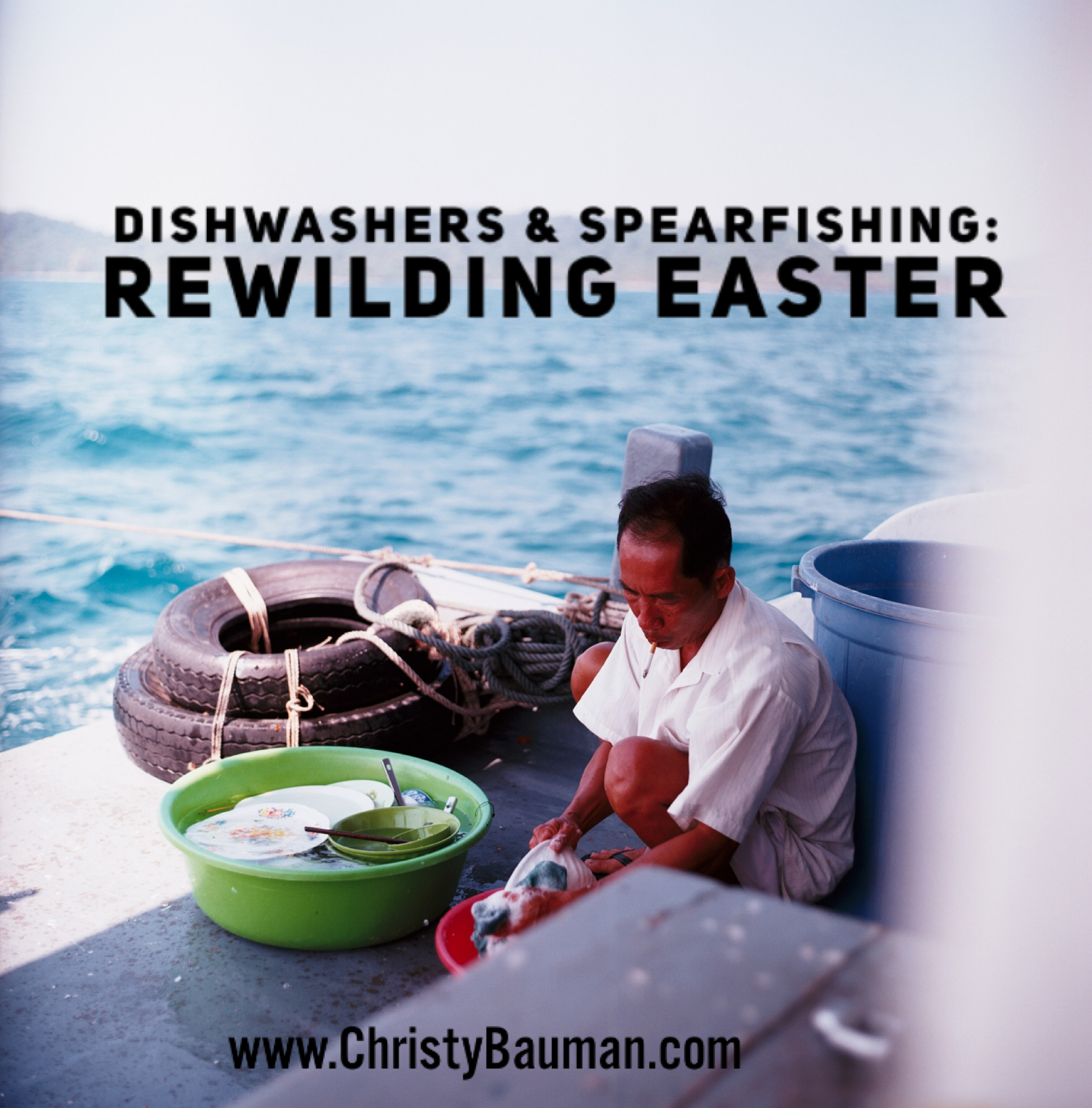
“The story of rewilding tells us
that change need not always
proceed in one direction.
It offers us hope that our silent spring
could be replaced by a raucous summer."
- George Monbiot, Feral
I hate my dishwasher but most nights around 9:15 pm you can find me in the kitchen filling it up and setting it to clean all night while I sleep. Deep in the futility of housework and parenting comes the satisfaction that my dishwasher will be working for me while I sleep. I don’t like washing dishes for everyday mundane meals, smoothies crusted onto kids' cups, hummus blobs left on a plate, or Mac and cheese dried on dishes left on the dinner table. Futility tries to swallow me up daily.
I have almost forgotten that dinnertime was my favorite meal to prepare when I am on the island, actually in truth dinner time was the only meal I would prepare for. At fifteen, long after my parents divorced, my time at my dad’s house was spent practicing Spanish and diving for dinner. If you want to know how to catch lobster and make conch ceviche, I will tell you now. It was mind-blowing to me that I could catch the most expensive meals in a restaurant. We would get on the boat around 11 every day, and without exception, the clear blue ocean would greet me with adventure. My body felt alive and exhilarated by the task of fishing for my dinner. I would practice reading the water and watching the sway of the coral to know which way the waves were moving much like an underwater weathervane.
Let me take a minute to explain coral reefs. A coral reef is the long strip of coral skeletons laid out across the ocean floor, imagine if you will a city of bones. They become the life source on the seafloor as fish and other sea creatures eat the organisms that collect on the coral. The type of fish and sea creatures you will see depend often on the vegetation type of coral. Angelfish, clownfish, barracuda and sea turtles are often tucked in different crevices of this city of bones. I have come to find that what sustains the ocean’s life are the old creatures, the crustaceans, such as shellfish and coral, these skeleton creatures that roam the deepest waters actually are the life source, holding plankton and other food available to keep the population of the ocean alive.
And when spearfishing, coral reefs are a compass when reading an ocean. So, as the boat cruised along with the crystal, clear waters, I would watch with intent where the coral reefs would break for a quarter mile or so, these areas leave barren patches of sand and these are the spots where the lobster’s traps are usually placed on the reef. My siblings and I would deliberate on which spot looked untouched as many local fishermen would fish near the traps. We would anchor the boat and load the speargun. This was a task I both loved and hated, pulling back this highly resistant gold rubber band to cock the spear in place could only be done against the strength of my thigh, usually leaving a bruise by the end of the day.
Once the anchor caught in the debris and sand of the ocean floor, the rocking of the boat would prove difficult for securing my flippers and loading my speargun. My brother and I would usually team up, we would sit on the opposite side of each other on the boat’s edge, secure our masks, and fall backward into the welcoming water. Once under the water’s cloak, we would swim to find rocks that might be hiding our sea crustaceans.
The secret to hunting lobster is readiness.
My brother or I would take turns unveiling the lobster’s hiding spots while the other would stand ready with the speargun. It is only a few seconds after you move the rock or debris that two or three lobsters might scurry out. The moment they were disturbed, the lobster would shoot backward across the sand bottom. The hunter would eye the largest one and shoot quickly. Because lobsters swim backward and so fast, you must aim your gun away from the area and shoot about three feet in behind the lobster’s swimming direction. It is only a matter of seconds to shoot once a lobster chooses which way to bolt out of a trap, and a hunter knows immediately when a lobster is hit. The underwater shrill of a wounded lobster is unmistakable and the hunter instantly knows they can pull the string attached to its spear, catch the flinching lobster in a netted bag and swim up to the boat. After a few hours of hunting these creatures in this repeated manner, we count our bootie and I offer to seine on the ride home to gather enough conch to make up for what lobster meat we could not secure. If there are fewer lobsters caught, it is easy to make up for the meal with conch meat. One drives the boat home while the other holds fast to the rope and seines the ocean floor for conch shells. Seining for conch is my favorite pastime, the boat slowly pulls me as I hang on to the rope being dragged through the water. The snorkel mask allows the fisher to watch for small hidden mounds on the ocean’s floor and dive down and retrieve a conch shell to their wrist-held mesh bag.
Once docked and tied at home, we gather and shuck the conch with a screwdriver and knife while another cleans the lobsters to grill. My body is exhausted from the hours of swimming, my sun-beaten skin is salty and I feel the soreness in my muscles as I chop the onions, tomatoes, and limes and hammer the conch meat. My siblings are all busy with the different tasks of cleaning food and preparing the meal. Music is playing, the conversation is full as we have spent most of the day surrounded by the silence of the ocean’s white noise. These are the meals I was created to make; this is the cooking that makes me come alive.
I do believe more than I ever have before that for something to live, something must die.
A few summers after I had learned how to spearfish lobsters, I got a job at Kroger grocery store in South Carolina – they put me in the seafood department because the manager heard I was from Louisiana and well versed in cleaning fish. My most hated order was the customer who wanted me to grab a lobster out of the glass tank and steam it. My thick plastic gloves, replacing my speargun, dug deep into that lobster tank and placed its rubber banded claws on a cold metal tray. I could still hear the unmistakable shrieking through the streamer’s walls when the heat hit forty-eight seconds. There was something excruciating about the death of domesticated lobsters. In all unabashed honesty, you must know that I would pray the sinner’s prayer over each one before I killed them.
Whereas, in the ocean, with my speargun, there was no mercy.
Somehow in my young brain, domesticated lobsters needed my mercy whereas wild ones needed my thirst.
Something must die for us to live, but it matters how it dies. Was it killed in freedom or captivity?
These are my favorite dinners, the ones that I caught with my hands and churned into sustenance. The hunter and gatherer in me can not find this same solace in ten years
of making Mac and cheese for my kids after a long day at work and then loading my dishwasher. It isn’t enough to sustain the wild but domesticated heart. On these nights after my kids are asleep and my kitchen is finally wiped down, I feel different exhaustion, the exhaustion of domestication. Although I am well aware that fantasy has a different cost and its own exhaustion, sometimes, I long for the days when my body felt full of sunshine and ocean rather than children’s longing hands and loud thoughts. We commit to rootedness in order to offer the rhythm needed for procreation but tucked inside of domestication is a grocery store aquarium of futility that requires more for me to flourish. Civility isn’t enough to sustain this wild but domesticated heart. The truth is that domestication is lazy-ier than the work of killing something wild.
I turn off the kitchen light, fill the dishwasher soap pods and my finger presses the button three times by habit...clean and soak cycle, high temp water, and delay 2 hours. I go to take my shower before the hot water is gone. These are my domesticated rhythms now.
The shower water reminds of the ocean water I so often miss, and my mind wonders what it will take to re-wild the futility I feel in domestication without drowning in fantasy. Working with clients around fantasy and futility, I have come to notice the nuances between the two - I am beginning to learn that resuscitation is different than resurrection. My community has helped me re-wild my heart but what does it look like to re-wild the domesticated soul? I don’t want to go back to my single life but I don’t want to be shackled in my domesticated one...with myself, my partner or God. I want to learn the art of resurrecting my soul.
There is a difference between recitation and resurrection.
At home and within my heart, I am learning the re-wilding of my faith...and I kindly whisper, this Easter is the anniversary of the morning our Savior was RESURRECTED not resuscitated. No one pressed upon His chest and gave Him back His old breath, Death did not resuscitate Him, the resurrection did. I want to press into that life, my life in which I am seeking for my futility and domesticated heart to be resurrected by this good life.
My dad called the other day, he had just gotten back from spearfishing, he told me that there is a weird phenomenon going on in the reef this past year, the coral is turning completely white, a bleaching that kills all the living organisms that feed on these ocean bones. On the mainland this happens often, a beetle takes the forest and it must be burned down to stop the spreading disease, the only way to save the forest is to burn it down and let the regrowth come back a few years later. But how do we do that underwater, how do we stop the bleach spreading across the coral in the reef?
Today, I know we are talking about re-wilding, not only ecologically, but spiritually, and nature’s answer to resilience is to almost kill whatever is diseased to keep it from completely dying. I believe this applies to my soul, a re-wilding and kind resurrection of myself, through the process of allowing what must die to be killed so that domesticated parts of my life can be resurrected.
On this Easter morning, I am beginning to learn that re-wilding is not only about how something is killed, but how something comes back to life.
“The story of re-wilding tells us that change need not always proceed in one direction. It offers us hope that our silent spring could be replaced by a raucous summer."
- Feral: ReWilding the Land, the Sea, and Human by George Monbiot


